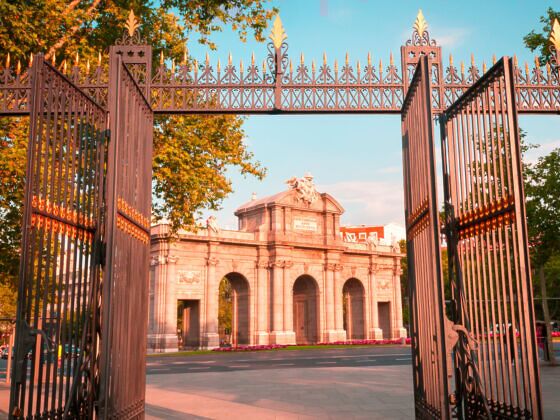The city of Madrid is filled with enough sights and activities to keep visitors entertained for weeks. While first-timers might be tempted to stick to popular areas like the central Sol-Gran Vía and regal Austrias districts, there are historic landmarks, picturesque plazas, and outstanding culinary offerings throughout the vibrant Spanish capital. You’d need a lifetime to fully explore Madrid’s 131 neighborhoods, each with its own personality showcasing a distinct part of everyday Madrileño life. But you can get a head start by venturing to these underrated neighborhoods that hold tons of appeal for travelers — beginning with the fact that they’re less touristy.
El Retiro — for the finer things
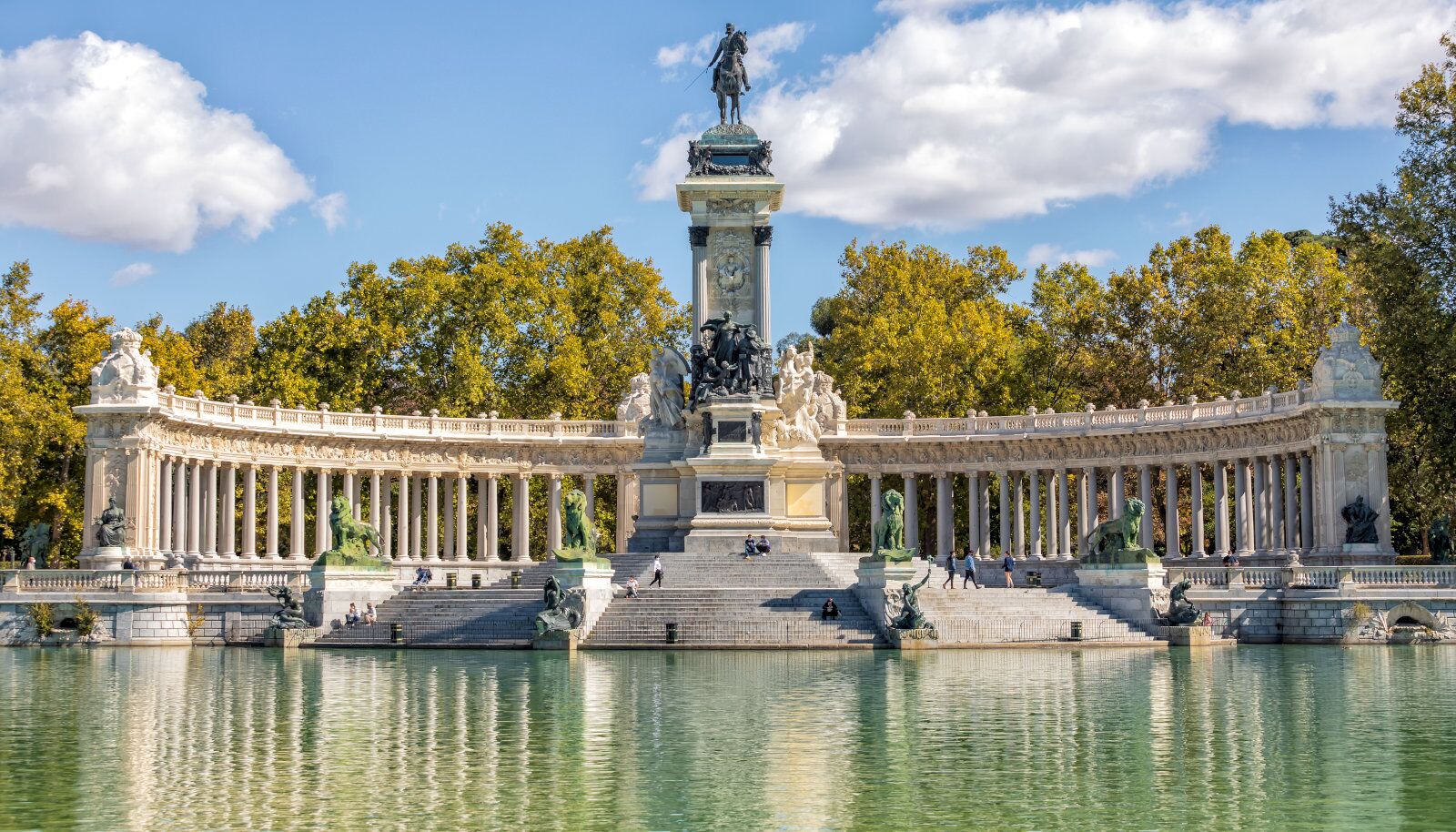
El Retiro Park. Photo: MADRID DESTINO
At first glance, Retiro won’t strike you as an underrated neighborhood. It is, after all, home to the lush El Retiro Park, a favorite open space among both tourists and locals, and the world-famous Museo Nacional del Prado. But the neighborhood itself gets far less attention than it deserves. Largely residential, Retiro has wide, attractive boulevards like Ibiza and Alcalde Sainz de Baranda that give it a similar layout to Barrio de Salamanca next door — and much like its neighbor, you’ll find lots of upscale boutiques lining the streets.
Designer shopping is just one example of the finer things found in El Retiro. Art is another. Stroll through the park to admire the stately cast-iron architecture of the 19th-century Glass Palace for a taste of the neighborhood’s style. When it’s time for a snack, stop by La Paz Market to sample local cheese, cured meats, and to try a Spanish omelet, as well as stock up on wine to take back home. Other traditional culinary offerings to check out include La Castela and Laredo, while there are plenty of modern options such as Arzabal and Bakan.
You’re not far from nightlife when you base in El Retiro, either. After dark, pop over to nearby Ibiza to find countless more restaurants and a huge number of bars. Housed in a 19th-century building, Florida Park alone is divided into five entertainment spaces and known to keep the party going all night long.
With 39 five-star hotels in the area, you’ll be spoiled for choice when it comes to choosing a luxurious place to stay. Bless Hotel Madrid specializes in feel-good elegance with personalized experiences and beauty treatments, while Rosewood Villa Magna will feel like your posh private villa in the middle of the prestigious tree-lined Paseo de la Castellana.
Conde Duque — for the trendsetters
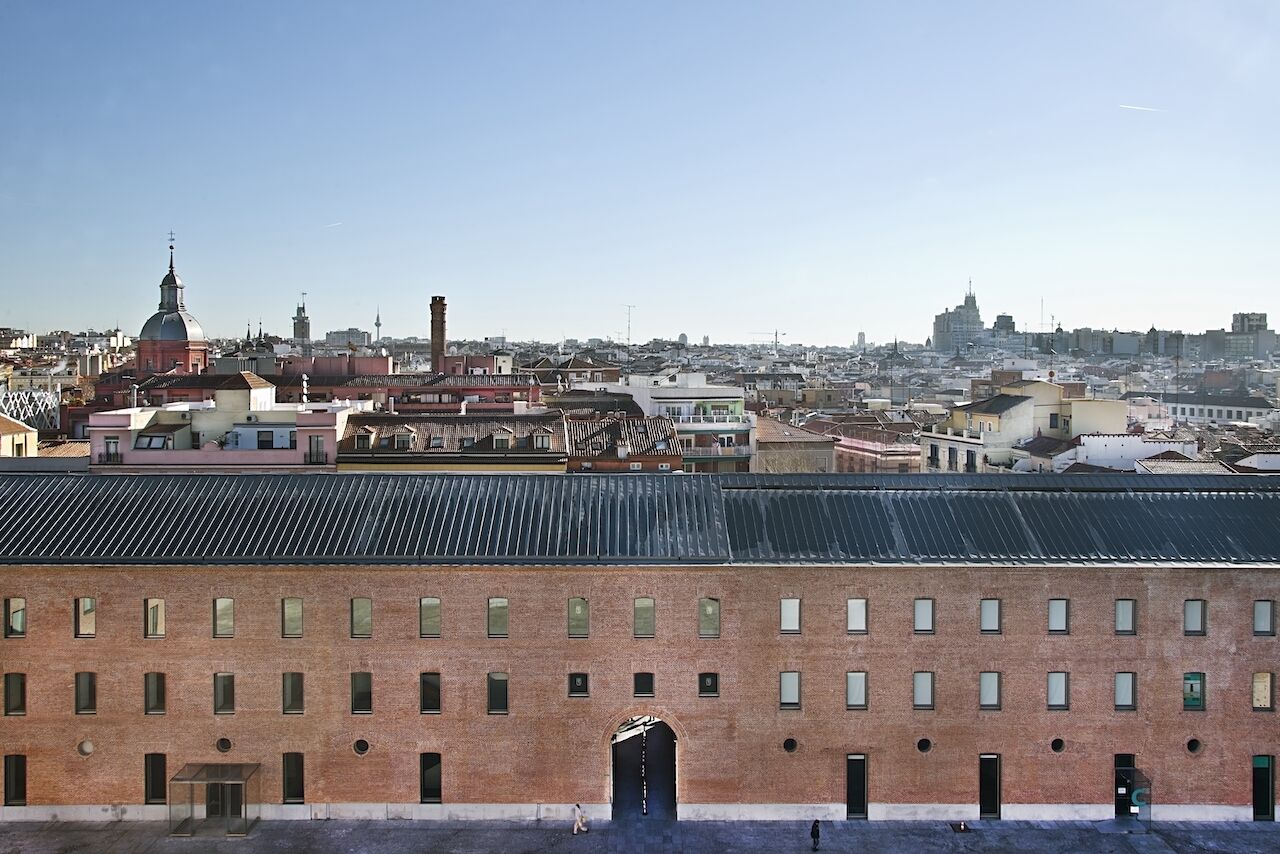
Conde Duque. Photo: MADRID DESTINO
West of the alternative and arty Malasaña district, you’ll find a small neighborhood with blurry borders called Conde Duque. This relatively new barrio got its name from Centro Cultural de Conde Duque, a military barracks turned cultural center. The neighborhood’s narrow cobblestone streets wander from Plaza de Las Comendadoras toward Calle Princesa and house all sorts of trendy establishments, from art galleries and vintage shops to bars and restaurants. Conde Duque’s vibe is decidedly hip — think Malasaña’s older, boho-chic sibling.
If you pride yourself on being an in-the-know traveler who frequents places before the masses catch on, you’ll adore Conde Duque, which is still a quiet and peaceful haven of everything cool. This is especially evident in the shopping scene — there are no department or chain stores in sight. Instead, up-and-coming designers and vintage shops coexist with comic stores and vinyl record shops. As far as food goes, tapas are the way to go here, thanks to a high concentration of old-school taverns where marinated anchovies, olives, and croquetas are served alongside vermouth on tap. To end the night, don’t miss Café La Palma and Tempo Audiophile Club for live music.
While Conde Duque isn’t known for luxury accommodations, you’ll have your pick of nice mid-range hotels. Try the boutique Dear Hotel, Hotel Vincci 66, or Hotel Riu Plaza España, made famous by the glass bridge on its rooftop bar.
Chamberí — for a taste of open-air local life
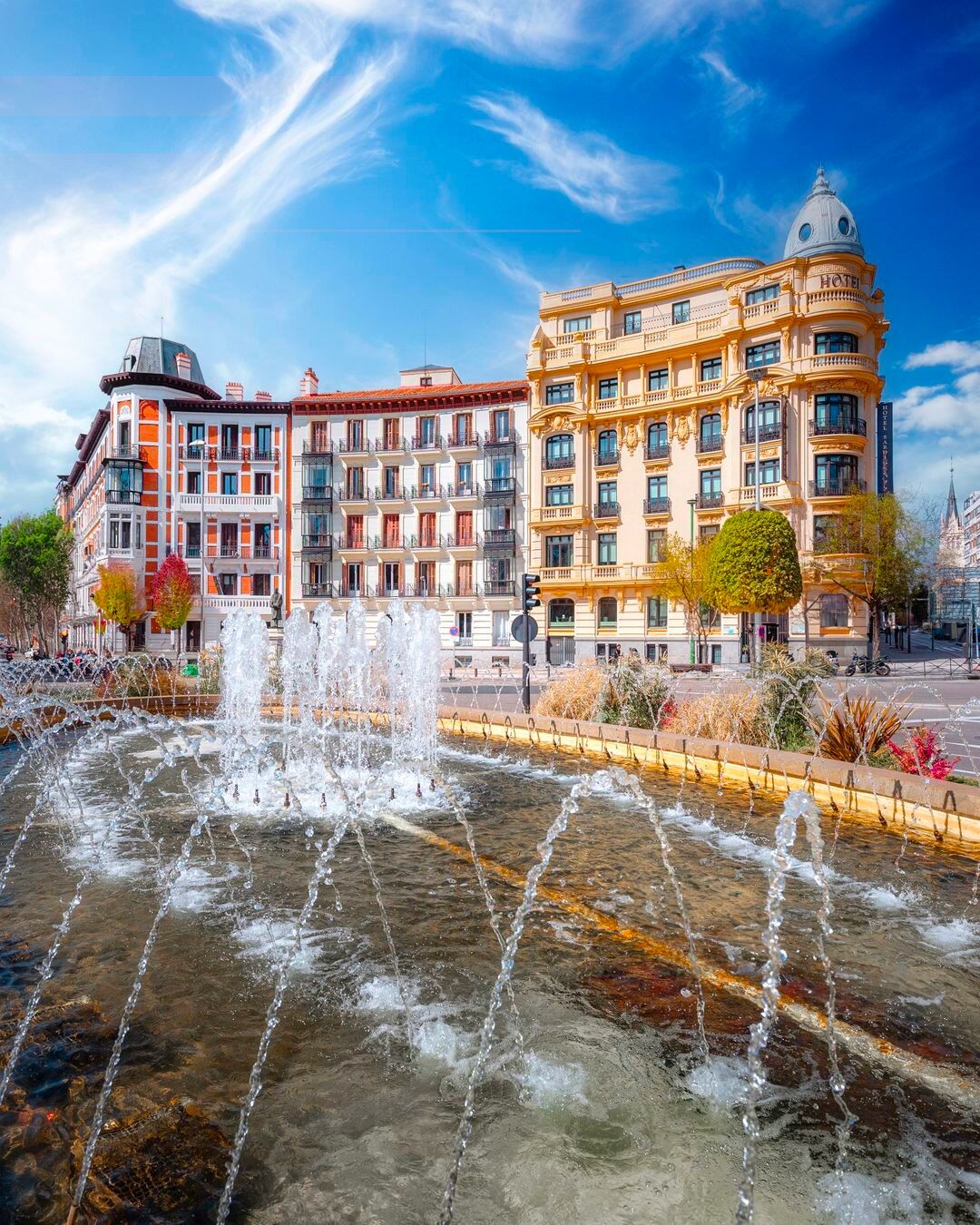
Chamberí. Photo: MADRID DESTINO
Located north of the city center, Chamberí is home to tree-lined streets, elegant architecture, and family-run shops. It also houses several lesser-known museums like the Sorolla Museum, where Valencian painter Joaquín Sorolla once lived, and the Geomineral Museum, which holds an important collection of minerals, rocks, and fossils. To appreciate works by Goya in an intimate setting, head to the Museum of Romanticism, located in the 18th-century former palace of the Marquis of Matallana.
Calm, residential Chamberí will appeal to travelers who want to experience the authentic Madrileño lifestyle away from the busy tourist spots. To best acquaint yourself with the area, head to its squares and terraces like Plaza de Chamberí and Plaza de Olavide, where locals gather to savor wine or sip a caña (small beer) after work. Calle Ponzano has recently seen its share of culinary hotspots crop up, such as Sala de Despiece, where chef Javier Bonet serves his take on traditional tapas. 99 Sushi Bar, a Japanese izakaya, and Neotaberna Santerra are also excellent options. Between bites, stroll down Calle Fuencarral, the district’s busiest street, to peruse shops selling everything from books to clothes and cosmetics.
One benefit of basing in Chamberí is that it has hotels for every budget. If you want to treat yourself, you can’t go wrong with the Santo Mauro, a Luxury Collection Hotel or the InterContinental Madrid. For a more affordable but equally memorable experience, the four-star NH Abascal provides plenty of comfort with a splash of sophistication.
Lavapiés — for the culture hounds
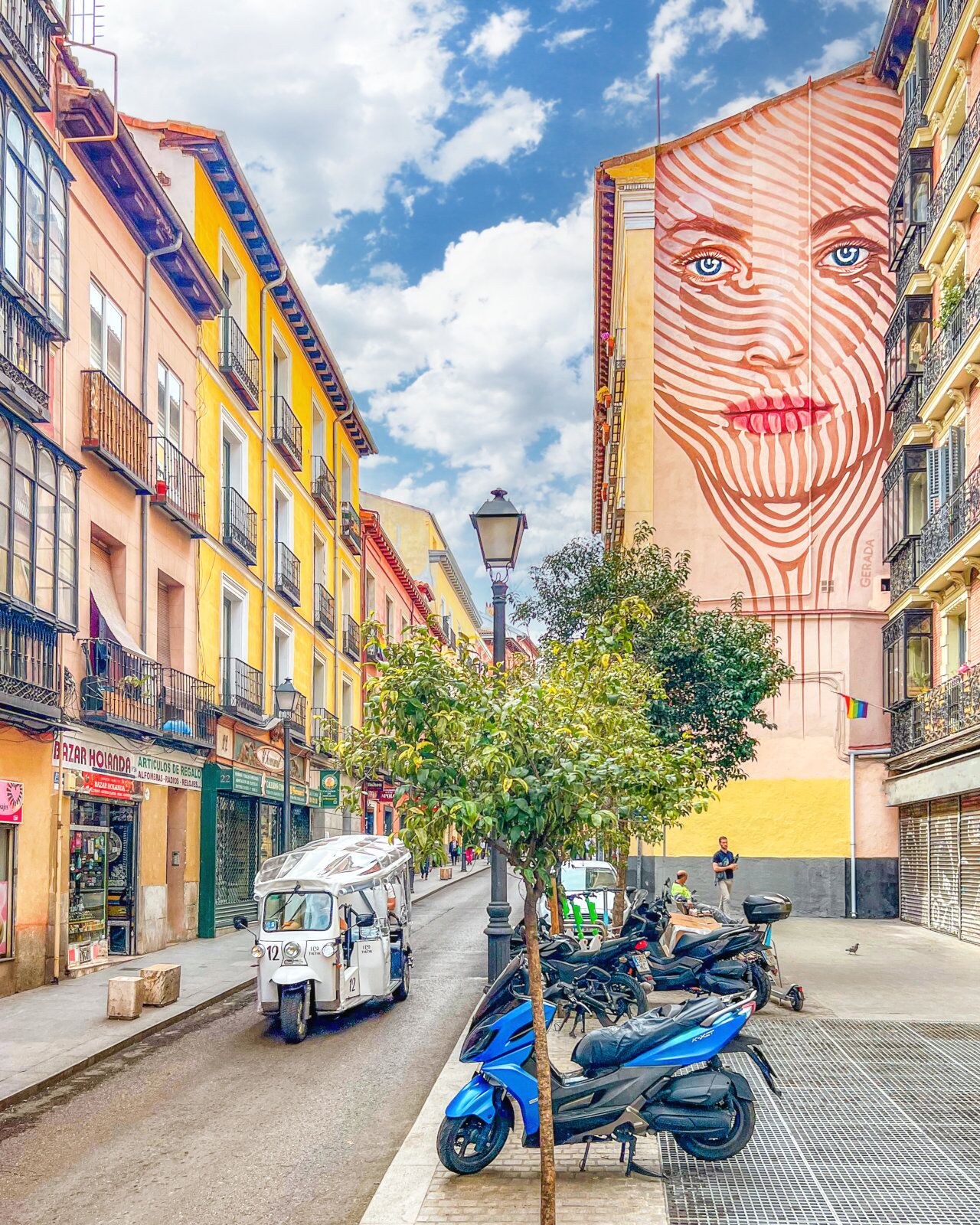
Lavapiés. Photo: MADRID DESTINO
Centrally located north of the Atocha train station, Lavapiés is one of Madrid’s most multicultural neighborhoods. It was once a working-class quarter whose steep, narrow streets lay outside the walled town during the Middle Ages. Over time, the area attracted immigrants from all over the world and established itself as a melting pot of cultures and traditions.
These days, the neighborhood is dotted with tea houses, restaurants, and cafes serving a variety of international food, from Middle Eastern cuisine to African and South Asian fare. One of Madrid’s finest gourmet markets that’s yet to be discovered by most tourists is also located in Lavapiés. It’s called Antón Martín, and it’s a great place to graze from different global food stalls and sip drinks from old-timey bars. Doppelgänger Bar, located on the first floor of the market, is always a hit with its fusion of Spanish, Asian, and Latin American small bites. Tapas lovers would do well to head to Argumosa Street, as well as the area surrounding Plaza Lavapiés.
It’s not just a robust food scene that makes Lavapiés lively. Wander the neighborhood’s streets, and you’re likely to stumble on newly opened art galleries and live music or dance performances. Lavapiés is also home to the famous Reina Sofía Museum, where you can see major works by artists like Miró, Picasso, and Dalí year-round. And hip visitors will appreciate the area’s newer accommodations. Take CoolRooms Palacio de Atocha, which earned a Michelin Key designation for its excellence among hotels. Its 35 modern suites are spacious and filled with light, some offering private terraces with fantastic city views.
There’s no wrong way to experience a city as dynamic as Madrid. But if you take the time to get to know its less-trafficked neighborhoods, you’ll quickly realize it’s one city you’ll want to keep exploring for the rest of your life.
For more help planning your visit, check out VisitMadridGPT, Madrid’s AI-based virtual assistant which will provide you with all sorts of tailored recommendations, and visit the links below:
https://www.esmadrid.com/en/if-life-were-a-city-it-would-be-Madrid
https://www.instagram.com/visita_madrid/
https://www.facebook.com/visitamadridoficial

